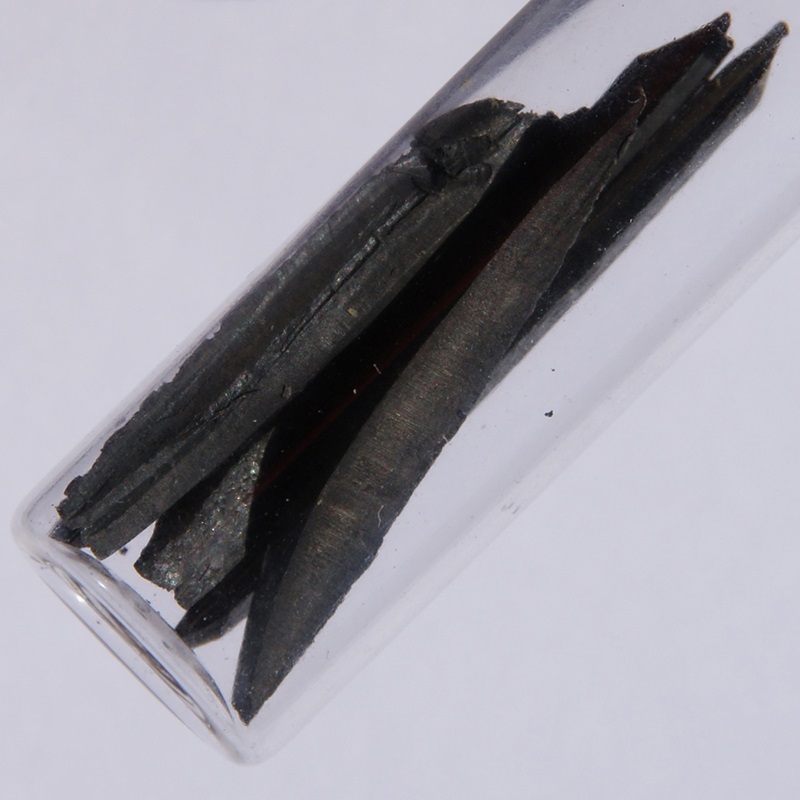لیتیم
3
Li
گروه
۱
تناوب
2
بلوک
s
پروتون ها
الکترون ها
نوترون ها
3
3
4
ویژگیهای عمومی
عدد اتمی
3
عدد جرمی
۶٫۹۴۱
عدد جرمی
7
دسته
فلزات قلیایی
رنگ
نقره ای
رادیو اکتیو
خیر
از زبان یونانی'لیتوس': سنگ
ساختار کریستالی
مکعب بدن محور
تاریخچه
Lithium was discovered by Johann Arfvedson in 1817 when he was analyzing minerals from the island of Uto in Sweden.
The pure metal was isolated the following year by both Swedish chemist William Thomas Brande and English chemist Sir Humphry Davy working independently.
In 1855, larger quantities of lithium were produced through the electrolysis of lithium chloride by Robert Bunsen and Augustus Matthiessen.
The pure metal was isolated the following year by both Swedish chemist William Thomas Brande and English chemist Sir Humphry Davy working independently.
In 1855, larger quantities of lithium were produced through the electrolysis of lithium chloride by Robert Bunsen and Augustus Matthiessen.
الکترون های هر لایه
2, 1
ساختار الکترونی
[He] 2s1
Lithium is the only metal which reacts with nitrogen under normal conditions
خواص فیزیکی
جنس
جامد
چگالی
۰٫۵۳۴ g/cm3
نقطه ذوب
۴۵۳٫۶۹ K ۱۸۰٫۵۴ | °C ۳۵۶٫۹۷ °F
نقطه جوش
۱۶۱۵٫۱۵ K ۱۳۴۲ | °C ۲۴۴۷٫۶ °F
گرمای همجوشی
۳ kJ/mol
گرمای تبخیر
۱۴۷ kJ/mol
ظرفیت گرمایی ویژه
۳٫۵۸۲ J/g·K
فراوانی در پوسته زمین
۰٫۰۰۱۷%
فراوانی در جهان
۶×۱۰-۷%

شماره ثبت سیایاس
7439-93-2
عدد CID پاب کم(PubChem)
۳۰۲۸۱۹۴
خواص اتمی
شعاع اتمی
۱۵۲ pm
شعاع کووالانسی
۱۲۸ pm
الکترونگاتیویته
۰٫۹۸ (درجه پاولینگ)
پتانسیل یونیزاسیون
۵٫۳۹۱۷ eV
حجم اتمی
۱۳٫۱۰ cm3/mol
رسانایی گرما
۰٫۸۴۷ W/cm·K
حالات اکسید شدن
1
کاربرد ها
Pure lithium metal is used in rechargeable lithium ion batteries.
Lithium stearate is used as an all-purpose and high-temperature lubricant.
Lithium is used in special glasses and ceramics.
Metallic lithium and its complex hydrides are used as high energy additives to rocket propellants.
Lithium stearate is used as an all-purpose and high-temperature lubricant.
Lithium is used in special glasses and ceramics.
Metallic lithium and its complex hydrides are used as high energy additives to rocket propellants.
Lithium is corrosive and requires special handling to avoid skin contact
ایزوتوپ ها
ایزوتوپ های پایدار
6Li, 7Liایزوتوپ های ناپایدار
4Li, 5Li, 8Li, 9Li, 10Li, 11Li, 12Li